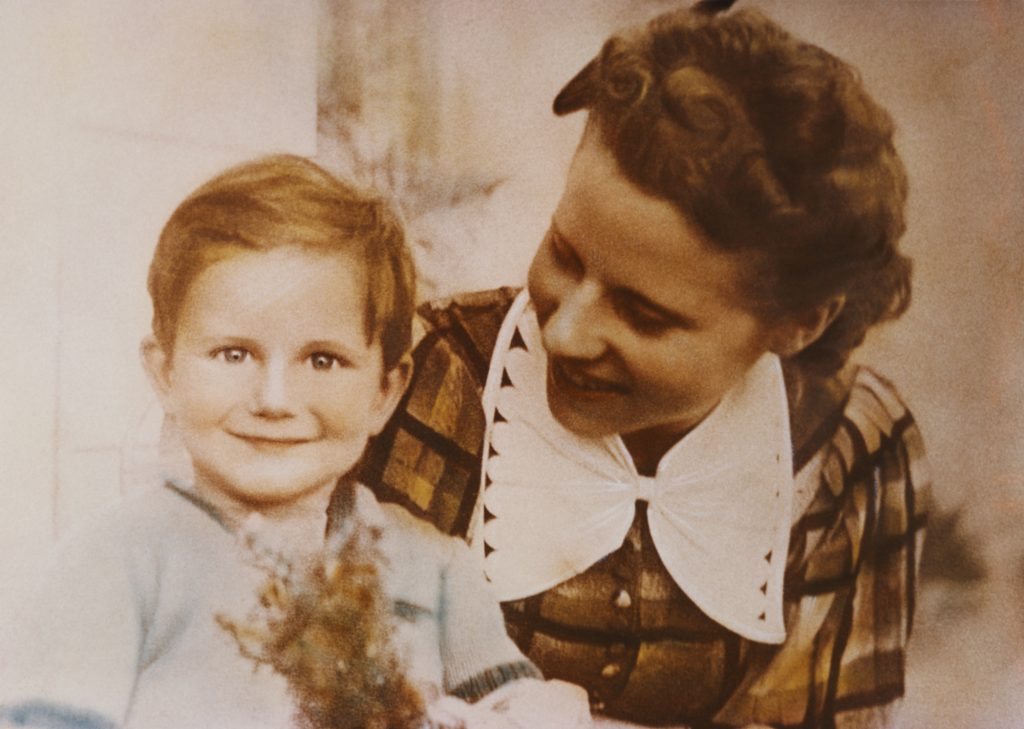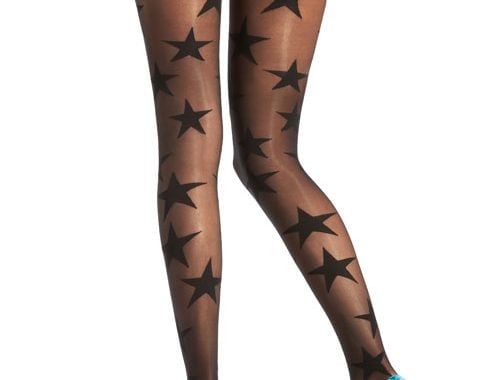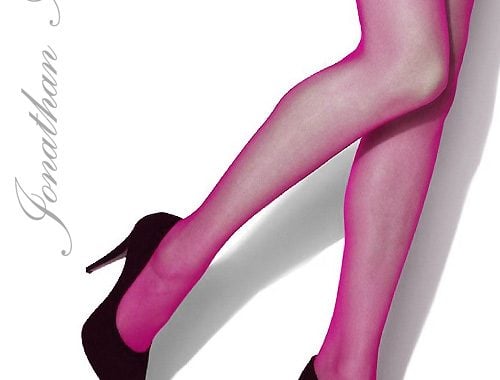Yves Saint Laurent, The Legacy Of A Fashion Titan
![]()
An Introduction To Yves Saint Laurent
In the world of fashion, few names evoke elegance, innovation, and artistic flair like the name Yves Saint Laurent. From his groundbreaking designs to his profound impact on the fashion industry, Yves Saint Laurent is a titan. His life and work continue to inspire and shape the world of haute couture. More than 60 years from the founding of his own fashion house, his name endures. He is emerging as a inspiration for young artists just discovering the Golden Age of Parisian haute couture.
Today, we look back at a pioneering legacy. His name is in the pantheon of true fashion deities, alongside Christian Dior, Coco Chanel, and Giorgio Armani. A legacy that has never been seen before, nor will it likely be seen ever again.
The Early Years Of Yves Saint Laurent
Yves Henri Donat Mathieu-Saint-Laurent was born on August 1st, 1936. He was born in Oran, French Algeria, where he lived for his entire childhood. This young boy would grow up to become one of the most influential and revered fashion designers of all time. But you might not have guessed it at first glance. He was a shy boy, and not at all confident. He was not athletic or precocious, and had an artistic sensibility, preferring to draw and make beautiful things. This latter part is understandable in a fashion designer, but the former is more curious. After all, fashion is a cut throat industry. And shy and retiring young designers are often pushed aside for the more confident ones. And Saint Laurent would definitely suffer because of this.
Yves Saint Laurent’s journey into the fashion world began at an early age. As a small child, he struggled at his studies in the very strict Catholic school he was enrolled in. He began to retreat into his drawings as a way to express himself. He would make paper dolls with his two sisters, and create anything and everything the materials around him would allow. Well into his teenage years, he showed an exceptional talent for design. His mother encouraged him to pursue his passion and reach his potential.
Yves Saint Laurent And His Time In Paris
In 1953, at the age of 17, he left his beloved Algeria for Paris. Saint Laurent took part in the annual design competition held by the Secrétariat International de la Laine in Paris. He entered in the dress category. He placed 3rd. During his first visit to Paris, he had the opportunity to meet Michel de Brunhoff, the editor-in-chief of Vogue Paris. He returned to Oran, but kept in touch with de Brunhoff. The editor encouraged him to pursue a career in the fashion industry. He even recommended an academy that would become Saint Laurent’s alma mater, the prestigious Chambre Syndicale de la Haute Couture.
In autumn 1954, Yves Saint Laurent relocated to Paris. He competed again in the design competition from the previous year. This time, he won both 1st and 3rd place in the same category. He sent his fashion illustrations to de Brunhoff. Impressed by their resemblance to Christian Dior’s drawings, de Brunhoff set up a meeting between the two. Christian Dior, a fashion luminary of the era. Everyone knew and respected Dior and saw him as pioneering in the world of fashion. Captivated by the young Saint Laurent’s talent, Dior immediately offered him a position. He began working in Dior’s studio for the summer of 1955. Yves Saint Laurent had achieved his dream. Dior would become both Saint Laurent’s mentor and his close friend, but this happy time would not last.
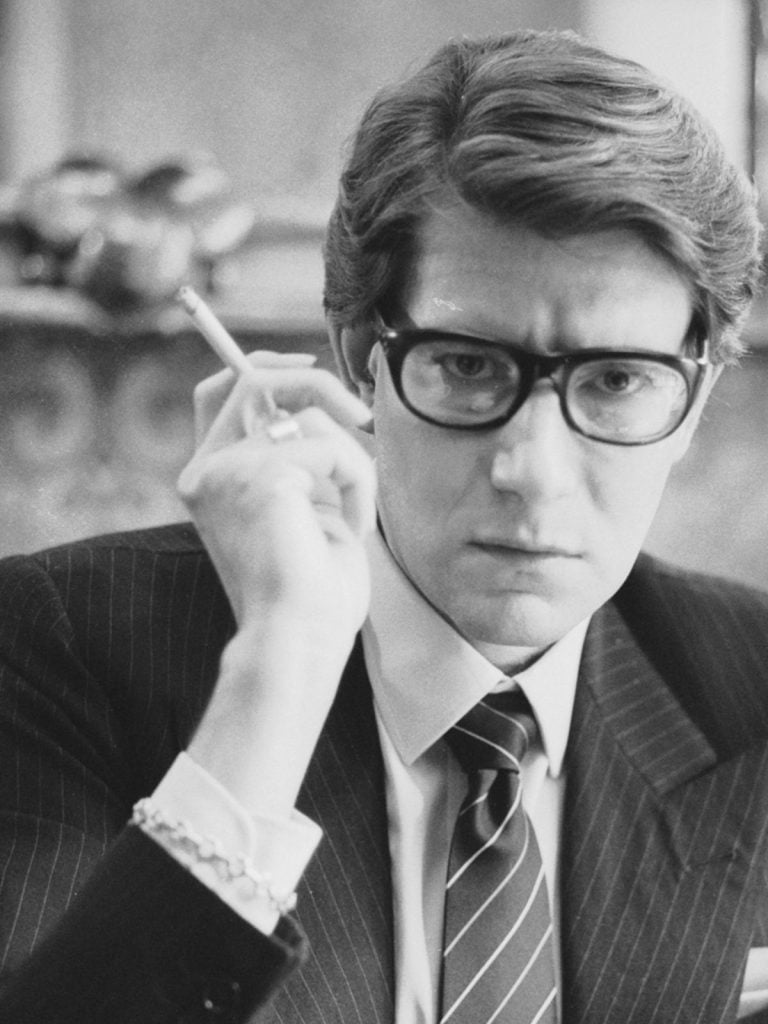
A Short Lived Triumph At Dior
His first years at Dior were tough. He began in June 1955, as an assistant to Monsieur Dior. Saint Laurent was given plenty of menial jobs to complete, like studio decoration. But Christian Dior himself made sure to foster his talents too. He was eventually given collections to design, and he did brilliantly. He started sketching for Dior and passed the designs directly onto the founder. Saint Laurent was giving the label new and fascinating designs that were becoming superbly popular.
But in 1957, after just three years of tutelage, Saint Laurent’s mentor Christian Dior suddenly passed away. At the young age of 21, Yves Saint Laurent became Creative Director of the House of Dior. This alone would instantly make fashion history, before the young man’s career had begun in earnest. Saint Laurent had become the youngest head designer of any fashion house in the history of haute couture. His first collection was “Trapèze” and it was iconic. And of course, it garnered critical acclaim and marked the beginning of a remarkable career.
When Christian Dior passed away, Saint Laurent took the opportunity to show the company owners what he could do. His 1957 collection was one of the most stunning and well received in haute couture fashion that year. Dior had been close to financial ruin for several years, but the young designer instantly turned their poor fortune around.
An Age Of Strife
In 1958 and 1959 however, the collections were not as well loved. He embraced the Beatnik fashion of the late 50s, and at the time it was too daring. The media turned on him and the House of Dior became humiliated.
It did not last long however. In 1960, the government conscripted Saint Laurent to fight for France in the Algerian War of Independence. The war began years before, but the owners of Dior had certain clout. They had reached out to several politicians to make sure the young prodigy could remain. They convinced the government that Saint Laurent would be more use to the French economy at home. Better at designing boots than in a barracks polishing them. But after two years of truly shaky collections, they cut the young maverick loose.
He was in training only 20 days before receiving word of his firing from his beloved Dior. The sensitive young Saint Laurent felt like he had nothing left. The stress of military life and the sudden loss of his position got to him. He was admitted to a military hospital for his mental health.
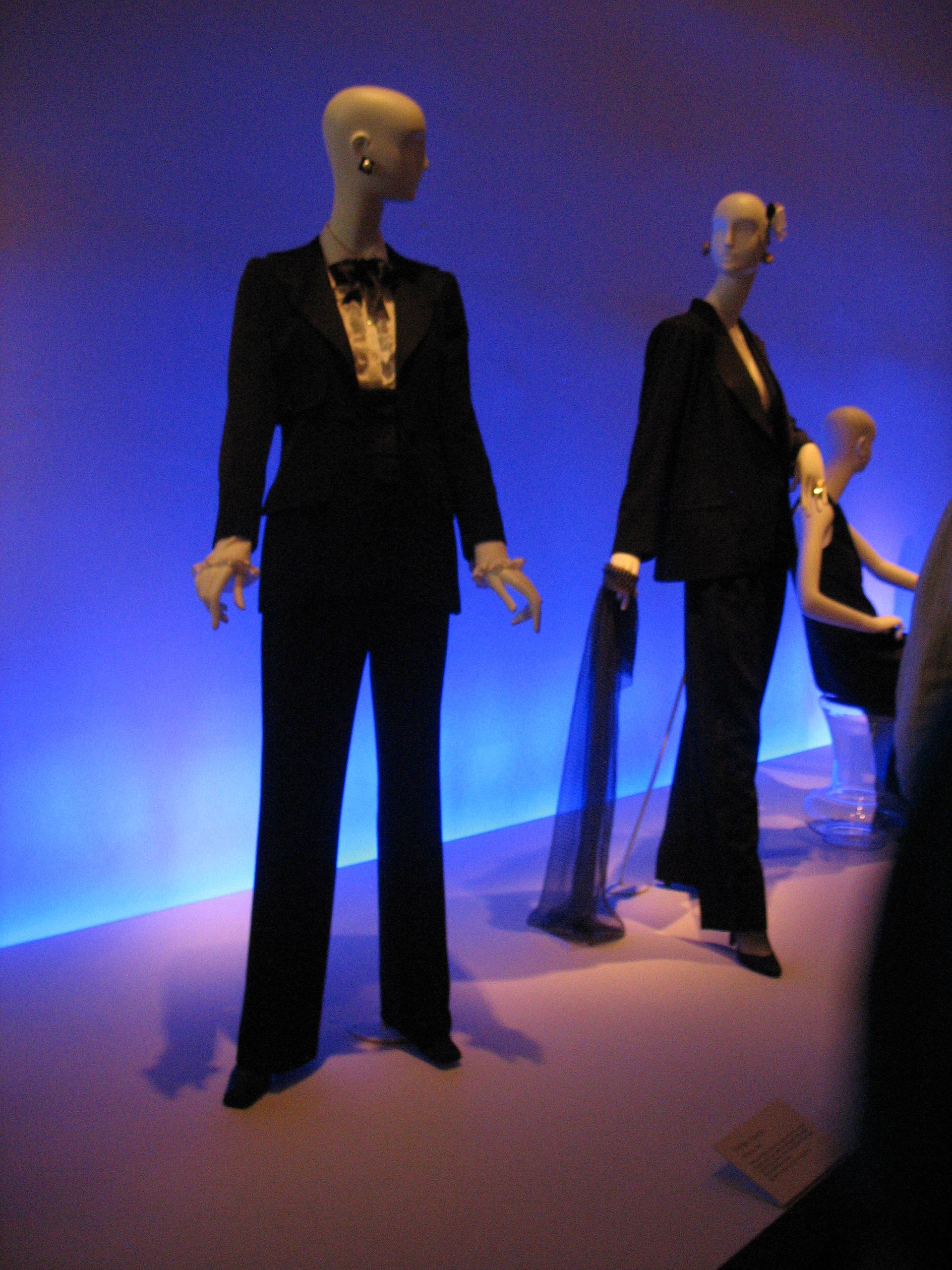
The Birth Of YSL
In 1961, he found himself without an employer and discharged from the army. So, the 25 year old designer set out for himself. He founded his eponymous fashion house, YSL. He started the company with co-founder Pierre Bergé, his lifelong partner. The brand quickly gained a cult following. It captivated the fashion world with its exquisite craftsmanship, luxurious fabrics, and avant-garde designs.
For the first decade of the fashion house’s history, YSL’s mission was to prove the owners of Dior wrong. Beatnik fashion and early hippy looks were not bizarre or something to be afraid of. Saint Laurent wanted to advance the new an innovative styles that were emerging at the time. He famously loved denim jeans. “I have often said that I wish I had invented blue jeans. The most spectacular, the most practical, the most relaxed and nonchalant.” Jeans were a little too casual for the time, but he wanted the world to embrace them.
Making a workwear fabric like denim something to wear casually was very daring. But perhaps more daring was one of the labels early designs to challenge gender norms. Le Smoking, the women’s tuxedo, came in 1966, and was YSL’s big break. Pictured above, Le Smoking was something quite daring. The Flapper Girls of the 1920s had challenged gender norms with their cigarettes and drinking and racy behaviour. But they were still very feminine, and wore dresses. To encourage a pant-suit for women was a massive stride in a whole new direction for women everywhere. It is really taken for granted now that pant suits are as common as skirt suits. All of this is thanks to the young Yves, still only 30 at the time.
Prêt-à-Porter
Prêt-à-porter is the French term for ready-to-wear. This means finished clothing sold from a rail. This is distinct from made-to-measure, which would be standardised clothing that is later adapted by a tailor to fit better. Beyond that, you have bespoke, which is entirely customised. From the material to the lining to what kind of stitching you would like. Off the rail clothing had existed for a while. But usually it would be for more affordable clothes, not made for those who could afford tailoring. Yves Saint Laurent’s greatest achievement was no garment. It was convincing the world that off-the-rail clothing could be high fashion.
YSL was the very first haute couture fashion house to make a prêt-à-porter collection. It popularised the phenomenon almost overnight among the Parisians, and later worldwide. If his own words, Saint Laurent wanted to “democratize fashion”. The majority of the price tag goes into labour with a tailored suit. It takes dozens of hours to make a tailored suit. And that means this precision and quality comes with a high price tag. The House of YSL endeavoured to make this a thing of the past.
And it did this as early as 1967, when it opened the Rive Gauche store. A true achievement for a brand less than a decade old. To be challenging the fashion world in such a way was very bold. But Saint Laurent was passionate about his mission. And he made some of the most stunning ready-to-wear pieces of the time. Now, we take it for granted that you should be able to shop like this. Picking up a YSL jacket, Armani coat, or Dior blouse from a rail in their store is common. But at this time, such a stunning innovation shook the world of apparel.

Struggling With Fame
By the 1970s, Yves Saint Laurent and the House of YSL were internationally renowned. But it is lonely at the top. Not even in his 40s, he became a member of the Paris jet set. He began frequenting nightclubs and expensive restaurants and living life among actors and politicians. But soon Saint Laurent fell into bad habits and turned to heavy drinking and recreational drugs. It was a lot of pressure for anyone to endure. And the expectations put on the new Dauphin of fashion maximised the pressure, and his work suffered.
His 1971 collection was an homage to the 1940s, and it was heavily criticised. Critics called it bleak and utilitarian, as French fashion in the 1940s was very plain and practical. Some harsher voices claimed he was even admiring the period of French Occupation. French newspaper France Soir called it “a big farce” and Saint Laurent’s confidence was shook even further.
Saint Laurent bought a villa in Morocco, and worked a good portion of his time away from Paris. This was close in climate and location to his childhood home. All of this seclusion and return to a happy childhood provided a safe haven for the sensitive artist to re-emerge. When not overlooking a collection, he spent most of his time in North Africa. He also purchased a villa, Château Gabriel, in Normandy. Saint Laurent was a fans of the novelist Marcel Proust, and the house was previously owned by Proust’s publisher. So they had the villa redecorated around the themes of his great novel, In Search Of Lost Time. Saint Laurent, ever the sensitive artist.
His Most Underrated Contribution To Fashion
Towards the end of the 70s and the start of the 80s, YSL was releasing ever more trail blazing designs. But there is really no contest for the most memorable addition to fashion history that this man made. Big shoulder pads. Some of you may feel that this is not a contribution at all, but a curse. We humbly submit that the big shoulder pad is a versatile and truly wonderful fashion innovation. And it can be used subtly too.
In 1978, on the cusp of the greatest decade in fashion, Saint Laurent started to pioneer this look. The larger and more structured look for blazers and jackets was very unusual for the time. It was a big hit though, and almost nothing encapsulates a fashion period like shoulder pads do for the 80s. The distinctive and ubiquitous look had its downside though. Saint Laurent didn’t design very much without them. They were simply too popular to forgo. This meant that many of his designs were very similar. Some critics claimed the House of YSL was becoming uninventive and lacked direction.
Soon after the fashion house got its reputation for becoming too familiar and predictable, disaster struck. In 1987, the “Black Monday” stock market crash happened. Although luxury brands often weather the storm more easily than affordable ones do, YSL was badly effected. Saint Laurent had tried to create something that would get them out of their creative rut. So he designed the most opulent collection yet, with jewel encrusted jackets that were going for $100,000. Of course, little sold, and Saint Laurent turned the prêt-à-porter range over to his assistants for good.

Yves Saint Laurent’s Later Years
The press may have been fickle, but his clientele were not. His most loyal adorers were also some of his first customers and his models. Like the actress Catherine Deneuve, first person to shop in his Rive Gauche store. And the model Betty Catroux, who Saint Laurent often said was his “muse”. He even thought of her as a twin sister. These women and dozens more continued modelling for him and being his brand ambassadors.
He became the first living designer in history to get a solo exibition at the Metropolitan Museum of Art. In 2001, the President made him a Commander of the Légion d’Honneur, essentially a knighthood for French citizens. In 2002hortly after this great honour, he retired, and became something of a recluse. But France still loved him, and wanted to recognise him once more. He was awarded Grand officier de la Légion d’honneur, a higher rank of knighthood in 2007. His last great contribution to fashion was to create a foundation with Bergé in Paris. It was a museum for the history of YSL. To this day, it operates and houses 15,000 objects and 5,000 pieces of clothing from the House of YSL.
The Passing Of A Great Man
In 2008, Saint Laurent was diagnosed with brain cancer. Only having a few weeks to live, Bergé and his doctor decided not to tell him of the diagnosis. Bergé said, “I have the belief that Yves would not have been strong enough to accept that.” Only a few days before his death, he and his lifelong companion Pierre Bergé, entered a same sex civil-union
Yves Saint Laurent died in June 2008, aged 71, in his Paris apartment. He had a Catholic funeral at Saint-Roch in Paris. His funeral attendees included several Presidents of France, the Empress of Iran, and his long time friend Catherine Deneuve. In his eulogy, Bergé said the following. “I will never forget what I owe you and that one day I will join you under the Moroccan palms.”
His ashes were scattered in the gardens of his villa in Morocco. The garden was a place he often sought refuge in when the life of a designer overwhelmed him. And there he rests to this day.
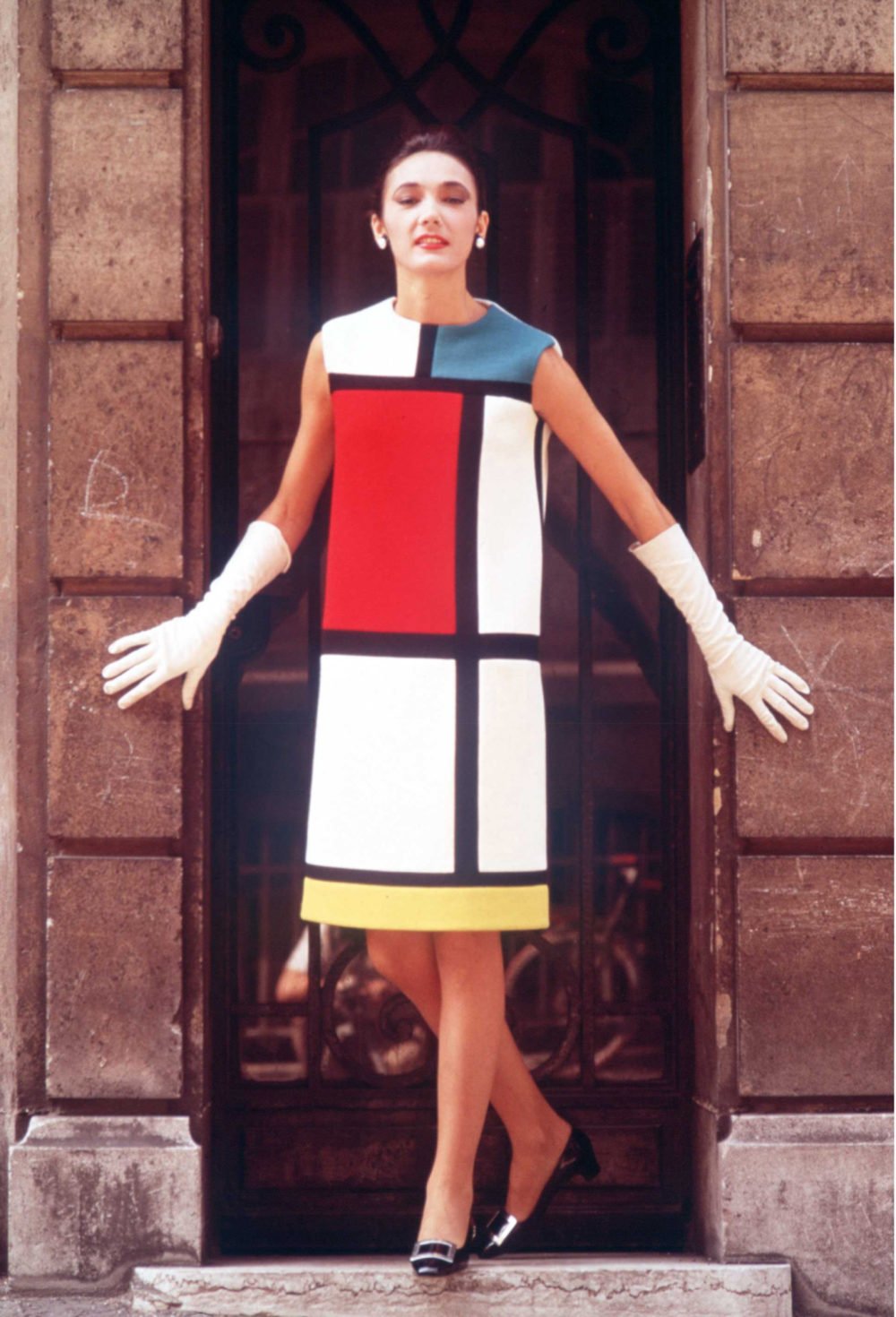
What Was The Philosophy Behind YSL?
YSL captured the imagination of the fashion world. They used exquisite craftsmanship, luxury fabrics, and daring avant-garde designs to do so. But of course, Saint Laurent always kept one foot firmly on the ground, so his designs never became too aloof. They always had a timeless appeal that the last generation and the younger one could both enjoy and appreciate. YSL became synonymous with sophistication, elegance, and innovation, redefining the way women dressed and inspiring generations of designers.
Yves Saint Laurent’s design philosophy was simple. Design a classic and elegant piece, then bring some daring innovation. But how were they revolutionary? Well, Saint Laurent was among the first to challenge traditional gender norms in clothing. He did this by introducing items that were usually the purview of men. Women’s tuxedos, tailored pant-suits, and safari jackets. All became his earliest signature creations. He redefined femininity by emphasizing women’s empowerment and freedom of expression through his designs.
YSL Signature And Revolutionary Designs
Among the key signature pieces that appeared early on was the Mondrian-inspired shift dress. It was a dress with colourful panels that embraces the boldness of Pop Art. The 60s was the time of Andy Warhol and the Pop Art movement, after all. Mondrian was not part of this movement, and belonged to the earlier modern movement. But the bold colours, blocks, and squares he pioneered most certainly were Pop Art, however. So, with a look towards less traditional and more daring looks, he released a Mondrian inspired dress.
The sheer “Trapeze” dress was also a huge part of the early success of his brand. Pictured above, it is a stunning item and one that is a staple today. It seems like a simple addition, but that is the point. All genius in fashion gets taken for granted eventually. But at one time this simple and timeless look was quiet daring. Its bold cut and shape is simply stunning, and forgoes the difficult and poised look of a form fitting dress. It is easy going, but not slouchy or slovenly.
But it is probably Le Smoking, the firebrand tuxedo for women, that really made him stand out. As we mentioned above, it was a real earthquake of a design at the time, and quite controversial. But who would remember Yves Saint Laurent now if he were not willing to be controversial. These are just a few examples of his boundary-pushing creations. And every single one of them revolutionized the fashion industry.
![]()
Yves Saint Laurent, Legacy And Lasting Impact
Yves Saint Laurent’s contribution to the fashion industry simply cannot be overstated. And they extend far beyond his innovative designs. He played a crucial role in democratizing fashion, making haute couture accessible to a wider audience. All of this, he achieved by introducing the concept of ready-to-wear collections. He broke down the barriers between high fashion and street style. And he forever changed the way people perceive and consume fashion.
Yves Saint Laurent’s creative genius extended beyond clothing. He expanded his artistic vision to perfume, accessories, and even interior design. Iconic fragrances like “Opium” and “Paris” became instant classics. While his artful accessories, such as the “Muse” and “Sac du Jour” handbags, are highly coveted pieces today.
Beyond his professional achievements, Yves Saint Laurent’s personal struggles and triumphs also left an indelible mark. He openly battled addiction and mental health issues. And he become an advocate for destigmatizing these topics within the fashion industry, and society at large. Yves Saint Laurent’s life and work epitomize the very essence of French fashion. Elegance, innovation, and a celebration of individuality. His designs continue to inspire for their timeless appeal, and his legacy as a titan of fashion lives on.

